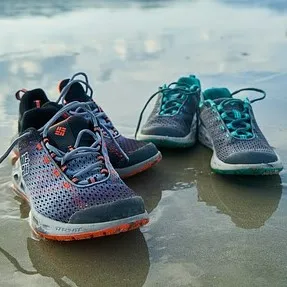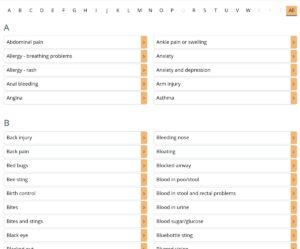In This Article
An online knee pain symptom checker should exist – in today’s age of technology, surely some smart folks have created an AI bot to mimic a medical assessment.
Everyone consults Dr Google first so our Physio team did exactly that, with a quick search for the latest “knee pain symptom checker.”
And the results? Disappointing doesn’t quite cover it!
What knee pain symptom checkers are available right now?
Searching for “knee pain symptom checker” brought up a number of currently available options.
There were sports injury websites with info on a selection of diagnoses (much like this site – umm, irony?).
Helpful? Yes. But you needed to know your diagnosis to find useful information.
Otherwise you’d find yourself endlessly sifting through knee pain and knee injury pages, thinking “well, that sounds similar to mine, but not quite.”
That’s the main issue with Dr Google – it’ll send you to a variety of pages but then it’s up to you to figure out which one fits your situation.
It also relies on your description of your knee pain – “knee clicking” takes you to different pages compared to “clicking knee”.
It’ll also prioritise “knee clicking” more than the next thing that you list, such as “unable to walk”. Medically, we’d consider “unable to walk” to be far more concerning than a clicking knee.

Suffering from knee pain and need the right shoes?
Our Physio experts have listed the key features to look for in running shoes to help manage knee pain.
They also name their 8 most recommended running shoe models for knee pain.
Anything better than Dr Google?
Other options in the “knee pain symptom checker” search were sites that could triage (or classify) concerning injuries, such as the Australian Government’s HealthDirect symptom checker.

They’re better than simple injury info sites because you don’t need to self-select the info.
But they’ve got some significant limitations in their scope and they have very poor accuracy.
A 2015 study by the good folks at Harvard found that the most popular symptom checkers got the diagnosis right only one third of the time!
In fact, they had the correct diagnosis in their top 20 options in just over 50% of cases 🙁
The Health Direct page is designed to figure out if you need a hospital, but that’s it.
That’s helpful if you’re experiencing chest pain or dizziness – it could save your life!
But if you’re using it as a “why is my knee clicking?” or “knee pain symptom checker” for sports injuries, it just tells you to stay at home and look after yourself.
No diagnosis. And certainly no rehab plan.
Can we make a better online injury diagnosis tool?
Now, I’m not being critical of the above symptom checker for its intended purpose.
It serves a great role in providing online screening for serious medical issues.
But what’s surprising is that no one has done better than a triage style system for musculoskeletal injuries, like knee pain or ankle injuries.

(A triage system is one that screens for categories of outcomes, dividing every complaint into “serious – go to hospital” and “not serious – no hospital needed” outcomes).
We have smart lights at home, smart apps for social media and smart cars on their way very shortly.
But for very common sports injuries…nothing.
And it’s not like the demand isn’t there.
It’s hard to put an exact number of worldwide sports injuries per year – they don’t have to be reported and most don’t seek medical advice.
But let’s narrow our focus down to just the USA, where there is a reporting system in place.
And we only look at children under 14, when injuries are mostly registered for tracking and insurance.
That subgroup in just one country has 3.5 million sports injuries per year!!!
Our goal?
So there’s our niche. Bringing the latest artificial intelligence to your smart phone, to address the need of online diagnostic and rehab information without all the guess work.
It’s a big job, so we’re going to start with lower back, hips and pelvis, thigh, knee, calf, ankle and foot injuries.
Fingers crossed for a successful launch in 2023.
